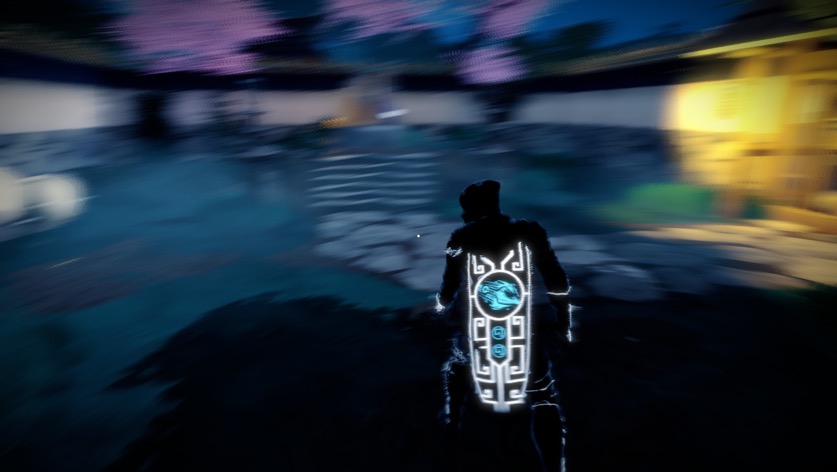
I really wanted to like Aragami. Created by Lince Works with a soundtrack from Two Feathers, Aragami was the game I was most looking forward to from E3 this year. My favourite game ever is Mark of the Ninja, so that may not be entirely surprising. However, sadly, Aragami just didn’t deliver on what it promised.
I remember the art style immediately captured my attention when I first saw the game. However, I found it impossible to play at full resolution. Even though my laptop well exceeds the required specs for this game, I experienced significant lag several times. Loading screens can be annoying, but I’d prefer them over a jerky transition to the next stage of a level. Additionally, the game has a stylistic motion blur by default, which obscures the screen while you’re turning the camera. Given this is a stealth game, it caused a lot of issues since I couldn’t see the guards while I was moving the camera. Thankfully there is an option to turn this off, but I have to wonder why it was kept at all.

The music was nice to listen to, if a bit repetitive. I’m pretty sure the same tracks were used in multiple chapters, which would normally be fine but the chapters generally took over twenty minutes to complete. All of the bosses had their own awesome music, but all of the chapters you fight them in are towards the end of the game, so it took some time to see this variation.
The most significant issue in this game is how the gameplay elements combine to make it extremely frustrating. First and foremost is the main mechanic: teleporting between the shadows. This ability is cool and satisfying to use, but it very quickly loses its lustre when you realise you’re a ninja who can’t jump or climb. This combined with having to very precisely aim where you want to teleport to with the little dot on your screen makes things feel very clunky. I was fine with it at first, because I had the option to play the game at a very slow pace. However, when you reach the boss battles you have no choice but to run around and teleport quickly at a rate where precision is impossible.
The saving frequency also made playing at a slow place very frustrating. The game auto-saves, but only after you achieve large goals. Some of the smaller goals are very challenging to get between, so you can find yourself repeating very large segments of the game. Personally, I don’t really enjoy playing the same five (or more) minutes of a game over and over just because there’s one thing I can’t get right. Dying after being hit only once just compounds the above problem.

Just put the dot up one pixel before the guard comes back and you can teleport, ok?
The plot, which could have been original, was just a predictable ninja revenge story about betrayal, light and darkness. I distinctly remember the final boss saying “you almost figured it out once or twice” and rolling my eyes because I’d already guessed what was happening by about chapter four of the game. Many of the main characters weren’t even introduced until after chapter eight (of 13), and by the time I got to the end I still didn’t really know who any of them were. The plot was also delivered in a boring way, with many of the cut scenes consisting only of the player character Aragami and your benefactor Yamiko talking to each other with the camera switching between the same two static shots.
It really was a chore to finish this game, and the only reason I did so was so I could write this review, if I’m honest. I hesitate to slap the “Not Recommended” label on this one because it is functional, it does have its moments, and I’m sure there are players out there who will enjoy it much more than I did. However, this is not a good stealth game by my definition of the term, and I feel like what Lince Works really wanted to make was an action/adventure title. Aragami is not a good stealth game, but there is still fun to be had.

Aragami is a ninja game that was meant to support several playstyles, from kill ‘em all action to sneaking by without a trace. However, this flexibility only makes the game seem poorly planned and directionless. The action portions of the game can be really great, but sneaking around has little to no reward and involves a lot of repetition. The graphics look great and the soundtrack is appropriate, if a little repetitive. The teleporting and shadow magic are fun to play around with, but they grow old very quickly. A large number of bugs and design inconsistencies in lighting and how far sound travels make it difficult to determine the rules of the game. This coupled with the story being incredibly boring, predictable and superficial meant Aragami just wasn’t the game for me.











